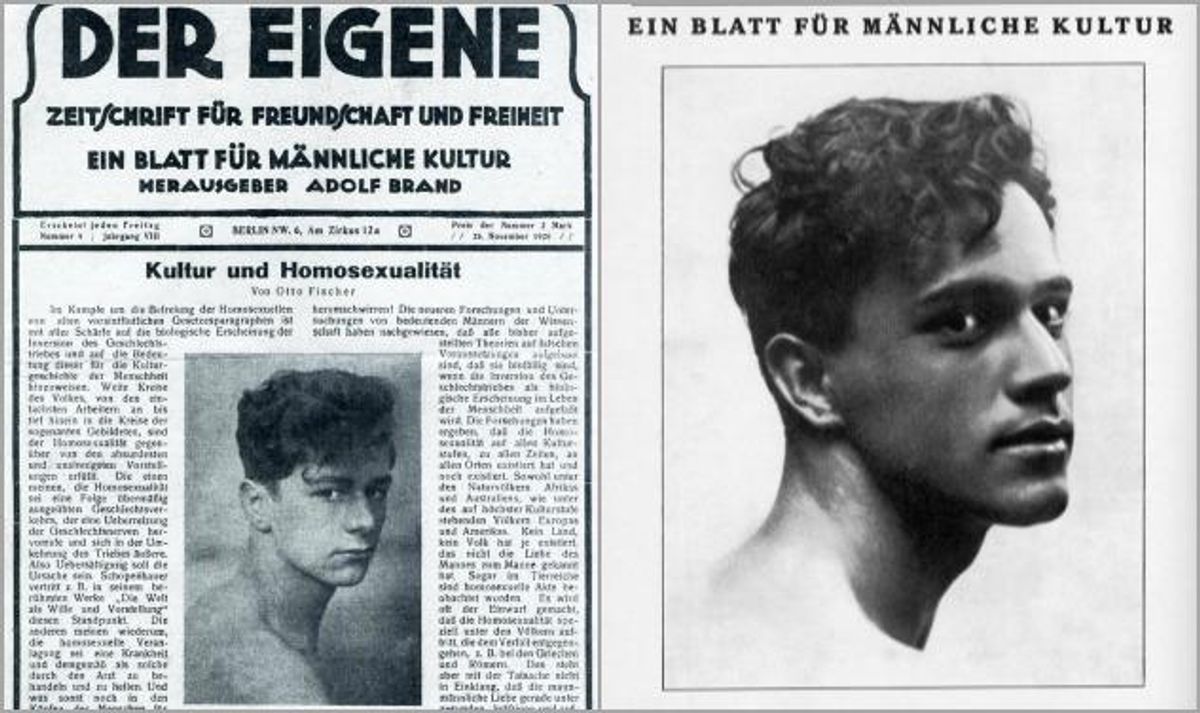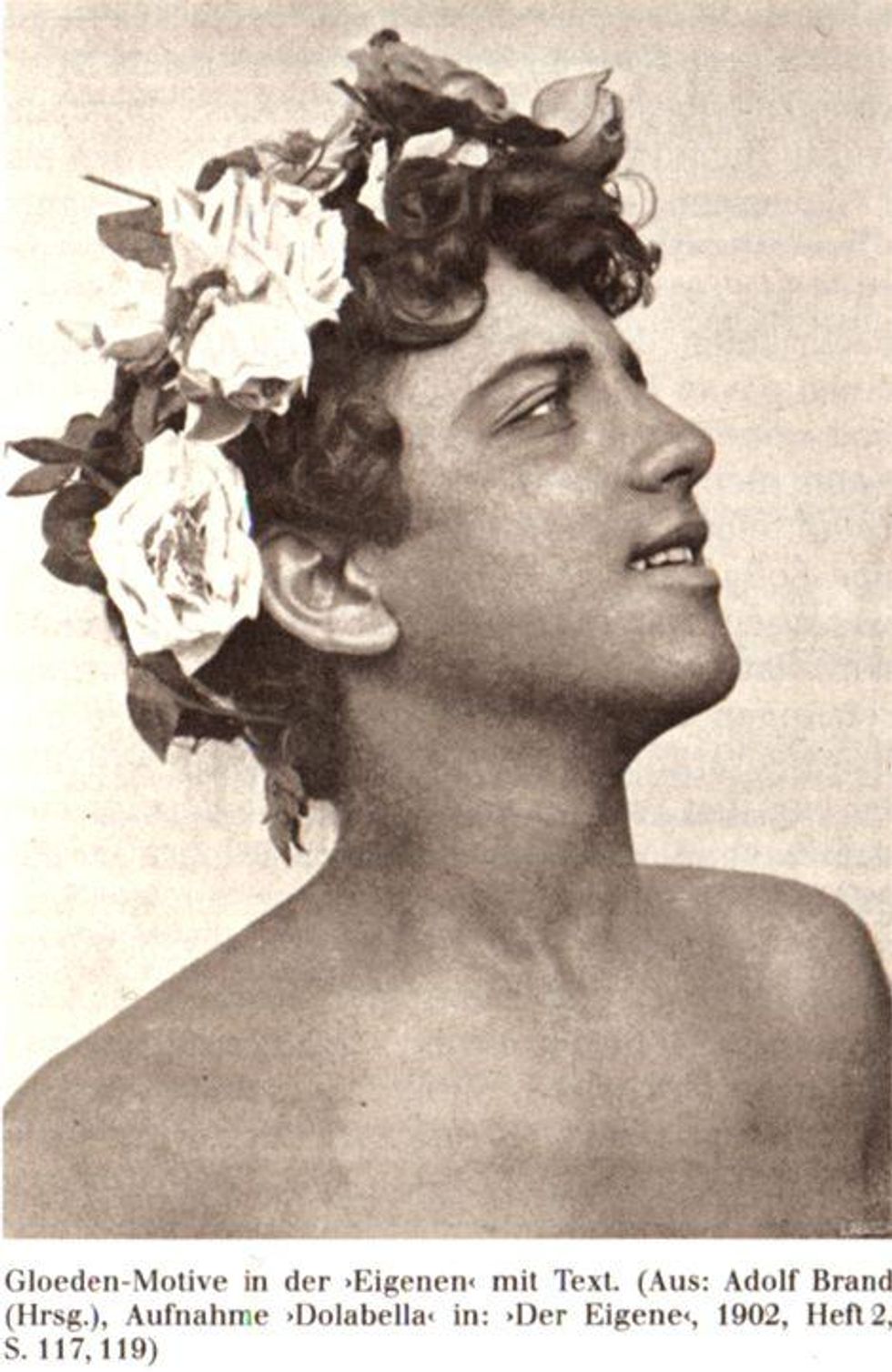Travel & Nightlife
The Man Who Made Magazines Gay

We owe thanks to a German named Adolf.
May 06 2013 3:57 PM EST
May 11 2016 2:53 AM EST
By continuing to use our site, you agree to our Private Policy and Terms of Use.

We owe thanks to a German named Adolf.
Gay magazines as we know them trace their origins to Germany, specifically Berlin, where a writer, editor, and photographer named Adolf Brand in 1896 founded Der Eigene. It was the first kind ever: a magazine dedicated to "masculine culture," man-on-man love, and the male physique.
Der Eigene took quite a high-minded approach to the burgeoning homophile movement, peddling poems, reviews, essays, and short stories by leading German thinkers like sexologist Ernst Bruchard, photographer Wilhelm von Gloeden, pacifist Kurt Hiller anarchist John Henry McKay, all the while making sure to keep things lively with nude pictures of men being men.
The name "Der Eigene" translates to The Own, a catchphrase lifted from Max Stirner's 1844 work The Ego and Its Own, in which Stirner argues that individuals can and should have complete autonomy in all aspects of their lives. To Brand and his colleagues, this included sexual relations. He wasn't interested in dissecting or diagnosing same-sex desire, as some others were. Rather, he wanted to savor romance. Scientific arguments "took all the beauty away from eroticism," he said.
Der Eigene's mere existence is a prime example of Berlin's liberalism in the late-19th Century and early-20th. But even as he pushed social, sexual and legal boundaries -- Brand was sued for libel after outing politician Freidrich Dasbach in 1904 and again in 1907 for doing the same to German chancellor Prince von Bulow, and the magazine was targeted by conservatives after running author Friedrich von Schiller's poem "Friendship," which opponents claimed was obscene; a court dismissed the case -- Brand himself wasn't immune to familial expectations: he married a woman named Elise Behrendt, a direct contradiction to the magazine's apparent mission.

But Brand's vision lived on in others' work. He sowed the field that allowed fellow German Otto Bierbaum to found Der Insel, another gay magazine, in 1899 (it shut in 1901) and elsewhere Brand's influence could be felt in Zurich, where publisher Karl Meier in 1932 turned a lesbian journal called The Friendship Journal into Der Kreis ("The Circle") one of the most successful and influential gay magazines in publishing history. Der Kreis was the only gay magazine to run during the Nazi regime and expanded its reach beyond the printed page by organizing homophile salons throughout Europe. And Der Kreis, the history of which is chronicled in Hubert Kennedy's book The Ideal Gay Man, also helped launch the career of Karlheinz "Jim of Zurich" Weinberger, a photographer whose denim-obsession just as seminal in the artful construction of masculinity as Muscles magazine and Bob Mizer.
Der Kreis and Der Eigene served as a template for the 1952 launch of States' very own One Inc. In fact, an advertisement for Der Kreis featuring "beautiful images" of men part of the reason the U.S. Postal Service deemed One "obscene" in 1954. While Der Kreis shuttered in 1967 and One wouldn't make it to the 1970s, both broke down barriers that created a gay magazine market, and neither could have done it without Der Eigene.
This means of course that those of us who enjoy gay magazines owe a big thanks to a German man named Adolf...
Below some covers from Der Eigene. Above right, a von Gloeden photo published in Der Eigene in 1902.
1899:
1919:
1920:
1924:
Want more breaking equality news & trending entertainment stories?
Check out our NEW 24/7 streaming service: the Advocate Channel!
Download the Advocate Channel App for your mobile phone and your favorite streaming device!